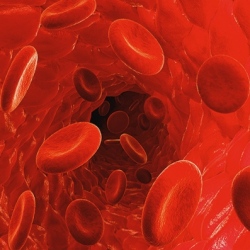
Derived from a natural defense mechanism of bacteria, the CRISPR genome editing system uses a class of proteins called Cas9 to engineer precise cuts in cellular DNA, making it possible for scientists to flexibly delete or insert genes nearly anywhere in the genome.
There are obstacles to using CRISPR in living organisms, however, and perhaps the biggest is the problem of delivering Cas9 to cells in the body. The most popular vector for gene therapies, in which new DNA sequences are inserted into the human genome to combat the effects of disease-causing mutations, has long been the adeno associated virus (AAV), which can deliver a genetic payload to a single, well-defined region of the genome without noticeable side effects.
However, AAV vectors have been largely unavailable to CRISPR scientists, because these viruses can only carry payloads up to a certain size, and a standard Cas9 system, including the Cas9 molecule itself and multiple guide RNA sequences to direct Cas9 to its DNA target, comes in over the limit.
Today, a paper in Nature demonstrates a way around this limitation, successfully engineering genetic changes in mice using an AAV-delivered CRISPR system. The work comes from the lab of Feng Zhang, of the Broad Institute of MIT and Harvard, who first demonstrated that CRISPR genome editing could be performed in mammalian cells in 2013.
Almost all scientists using CRISPR today choose to use a Cas9 molecule derived from the bacterium Streptococcus pyogenes. “The reason the S. pyogenes has been used as the standard is because it was the only Cas9 that was very reliable, in terms of efficiency, and also had a broad targeting range,” explains Le Cong, co-lead author of the new paper and a postdoctoral researcher at the Broad Institute. (His fellow lead author, Fei Ann Ran, presented some results from this paper at the Molecular Medicine Tri Conference this February.)
The efficiency refers to how reliably the Cas9 molecule cuts both strands of DNA at a targeted site, while the targeting range refers to how many potential regions of the genome the molecule can interact with. All Cas9 molecules need to make cuts next to specific PAM (protospacer-associated motif) sequences, but the S. pyogenes Cas9 uses the PAM sequence NGG, which is so common across the genome that it can in effect be targeted almost anywhere.
